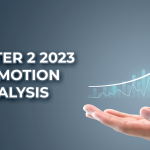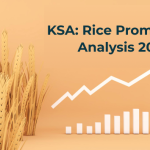-
By Team Clicflyer
-
August 20, 2022
Unlikely as it might seem, business intelligence does not seem to be a modern term anymore. It existed before the digital age, and it has helped the top business and data analysts derive valuable insights. Way before 1965, the ‘ Cyclopaedia of Commercial and Business Anecdotes’ by Richard Miller Deven (1865) used the term ‘ business intelligence for the first time. It was used to describe the banker, Sir Henry Furness, the man who understood the market, instabilities, and political issues much before his competitors.
Before 1965
Before the twentieth century, technology was not advanced enough to be considered ‘business intelligence’. An article titled ‘ A Business Intelligence System’ (1958) by the IBM scientist Peter Luhn was a landmark publication on the subject. It mentioned that business intelligence distributed information to different government, scientific or industrial organizations’ – during the Second World War. Known as the ‘ Father of Business Intelligence’, Luhn’s research led future analysts to establish methods based upon IBM’s touchstone analysis.
In 1968, very few trained individuals could translate raw data into useful information using specialized skills. Data collected from various sources were stored in silos, while research was displayed in a disjointed report with open-ended interpretation. In the end, Edgar Codd published a report in 1970 that proposed developing a database model – which became popular. With the arrival of computers, it was a quick alternative to data storage on paper.
IBM invented the hard disk in 1956, which revolutionized data storage. Furthermore, laserdiscs, floppy discs, and other technology store data. Thus, the first management system for databases was created, known as the decision support system (DSS). As people understood business intelligence better, the number of business intelligence companies increased in the 1980s. Though it was brand-new, clumsy, and complicated, people could organize and data more efficiently.
Executive Information Systems (EIS)
The Executive Information Systems (EIS) offers accurate and real-time data so that the upper management can streamline decision-making. Used in the 1970s, it uses simple interfaces and graphics to present the data. Thus, executives now handled their appointments, research, reports, and email over-relying on their secretaries.
Online Analytical Processing (OLAP)
OLAP comprises a system enabling users to interpret data from different sources and offering various perspectives. These databases use a multidimensional data model, which supports ad hoc queries and analyses in marketing, business process management, agriculture, sales business reporting, management reporting, forecasting, and budgeting. Being an SQL-based program, it offered multiple ways to assemble information before the development.
In the 1980s
In 1988, an international conference took place in Rome, which intended to streamline the data process. Also known as the Multiway Data Consortium, it was a landmark conference to simplify business intelligence analytics. After the conference, business intelligence analysts and intelligence organizations developed new tools for easy data access.
The Gartner analyst Howard Dresner reintroduced the term ‘business intelligence’ into everyday language in 1989. It was a simple alternative to the more complicated-sounding EIS and DSS systems, and more vendors created now data warehouses. This saved time, stored data in one place, and improved data flow.
Data warehouses were famous in the 80s because businesses regularly started working with in-house solutions for data analysis. It saved time as people received information on time and made decisions quickly, and the data was now stored in one single location. They developed Big Data as well, which was readily available through a single data source. Therefore, the internet, Facebook, email, and Twitter were easily accessible and saved time as well as money. Also, Big Data detected fraud, minimized loss, and increased profits.
Business intelligence 1.0 and Business 2.0
As business intelligence software progressed further, organizations produced, organized, and visualized data. However, time and complexity were an issue. Thus, cloud-based programs simplified and expanded the potential of business intelligence platforms. On the other hand, BI 20 introduced real-time processing, which allowed companies to determine based on recent information. Self-service systems needed no manual intervention, and business intelligence only grew with the internet and social media to share opinions and ideas.
Users can now review software and methods of business intelligence to analyze the current market trends and customer perception of their brands in a data-driven scenario. Today, business intelligence tools are designed concerning industries such as sports, law enforcement, and healthcare to access faster insights and reduce storage costs. Mobile platforms further allow BI users to work on their tablets, smartphones, and mobile devices.
Therefore, business intelligence has a long and interesting history. If you need expert information on business intelligence and analytics, please contact us at ClicFlyer.
Recent Post
-
 Introducing ClicFlyer: Your Ultimate Shopping Companion in Indonesia!
Introducing ClicFlyer: Your Ultimate Shopping Companion in Indonesia!
-
 Retail Promotion Shifts During Back-to-School 2022
Retail Promotion Shifts During Back-to-School 2022
-
 Quarter 2 2023 Promotion Analysis
Quarter 2 2023 Promotion Analysis
-
 Eid-Al-Adha Promotion Analysis 2022: Insights for KSA and UAE
Eid-Al-Adha Promotion Analysis 2022: Insights for KSA and UAE
-
 KSA: 2022 Rice Promotional Analysis
KSA: 2022 Rice Promotional Analysis
-
 Quarter 1 2023 Promotion Analysis
Quarter 1 2023 Promotion Analysis
-
 Private Label 2022 Promotion Analysis in KSA
Private Label 2022 Promotion Analysis in KSA
-
 Eid 2022: A Comprehensive Look at Retail Promotions in KSA and UAE
Eid 2022: A Comprehensive Look at Retail Promotions in KSA and UAE
-
 KSA Q4 2022 Retail Promotions Overview
KSA Q4 2022 Retail Promotions Overview
-
 Ramadan 2022- Brief Report and Insights
Ramadan 2022- Brief Report and Insights



